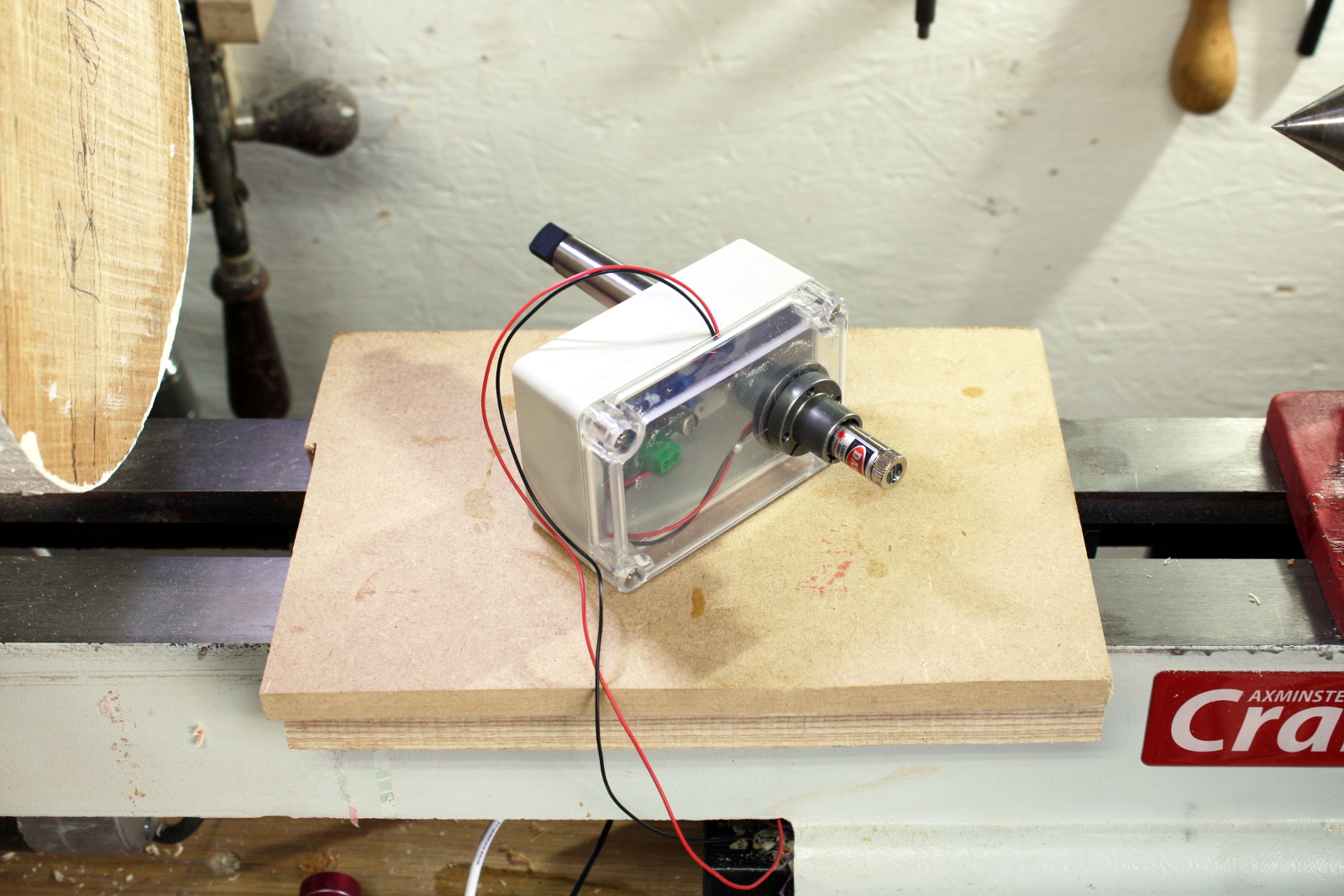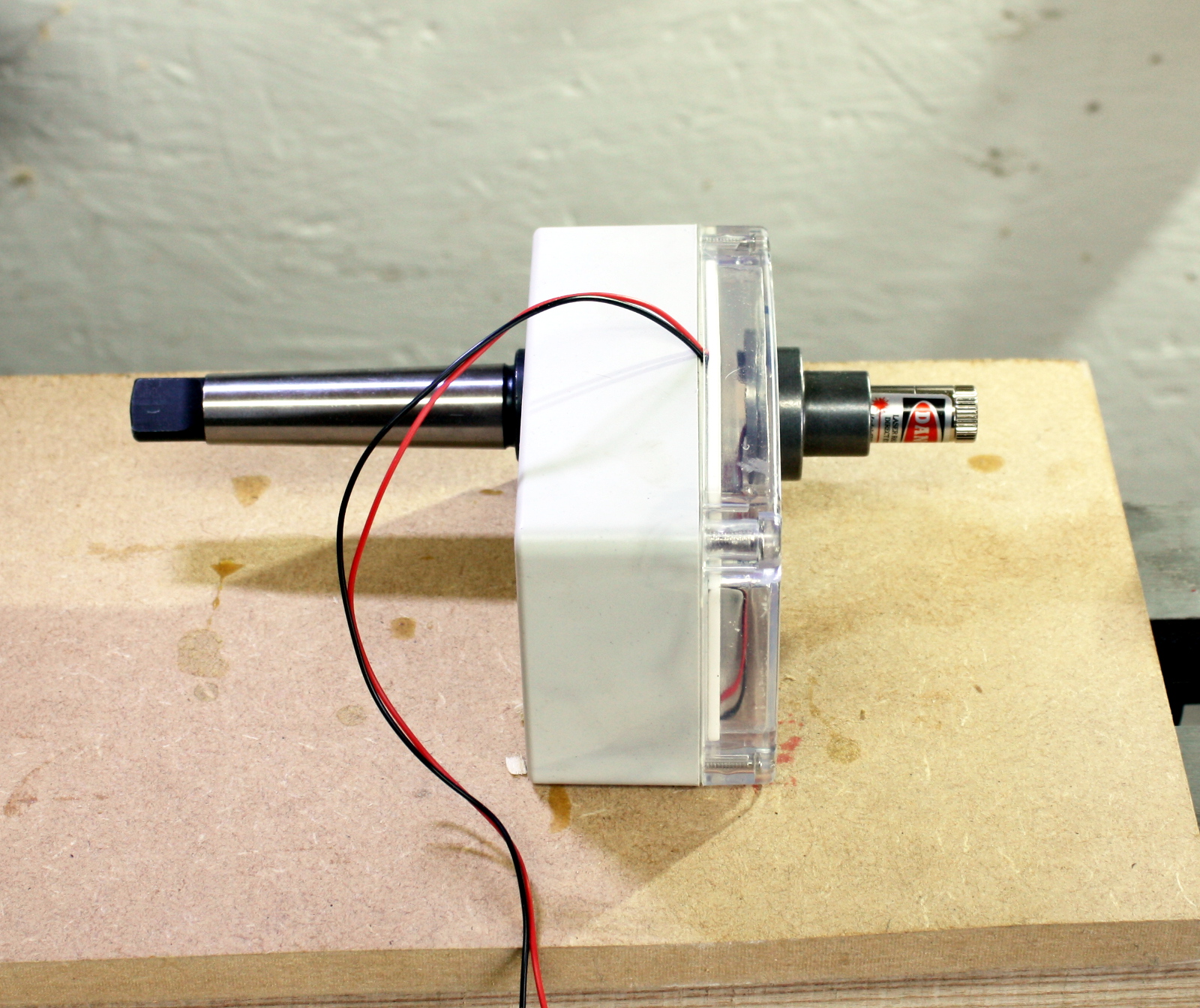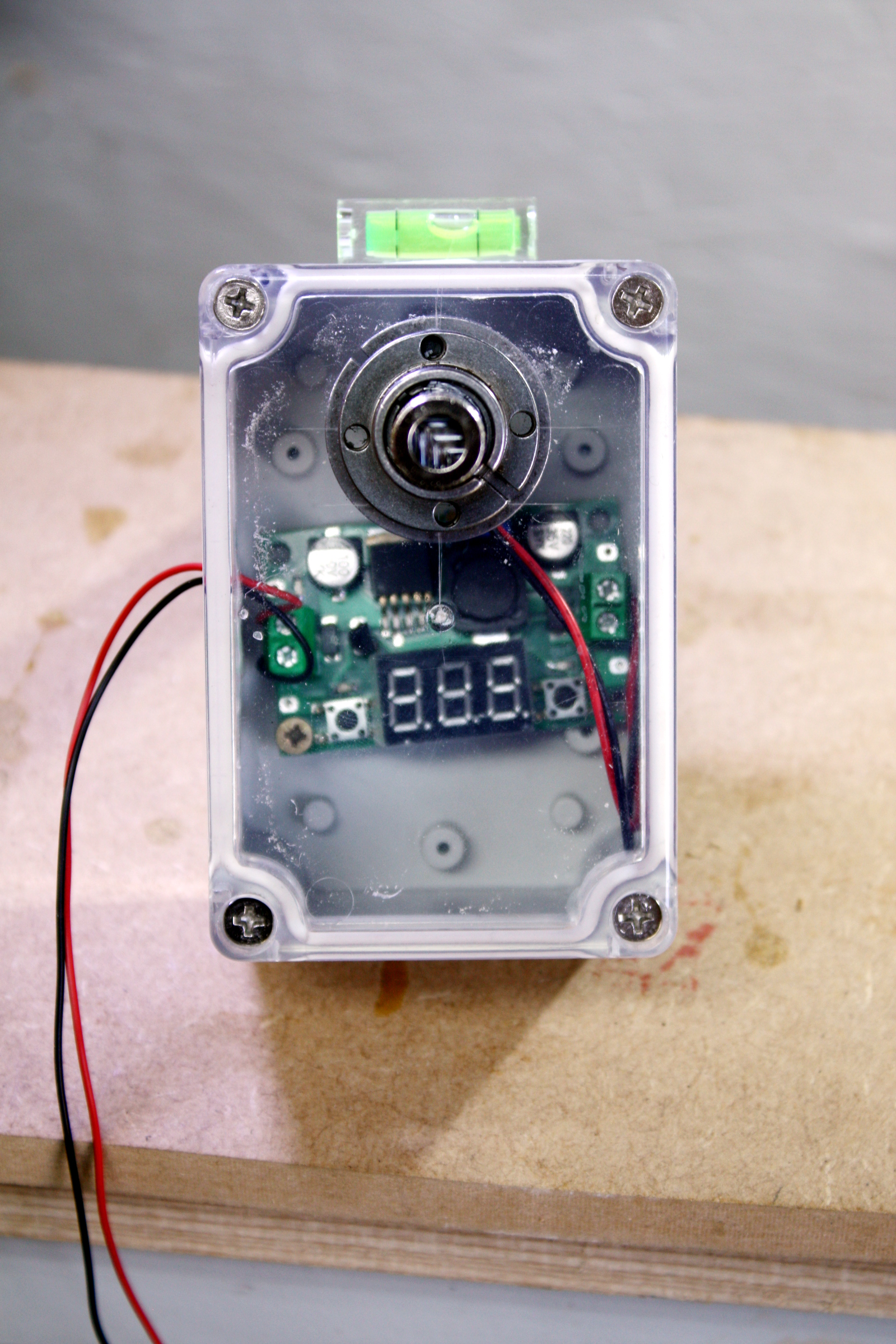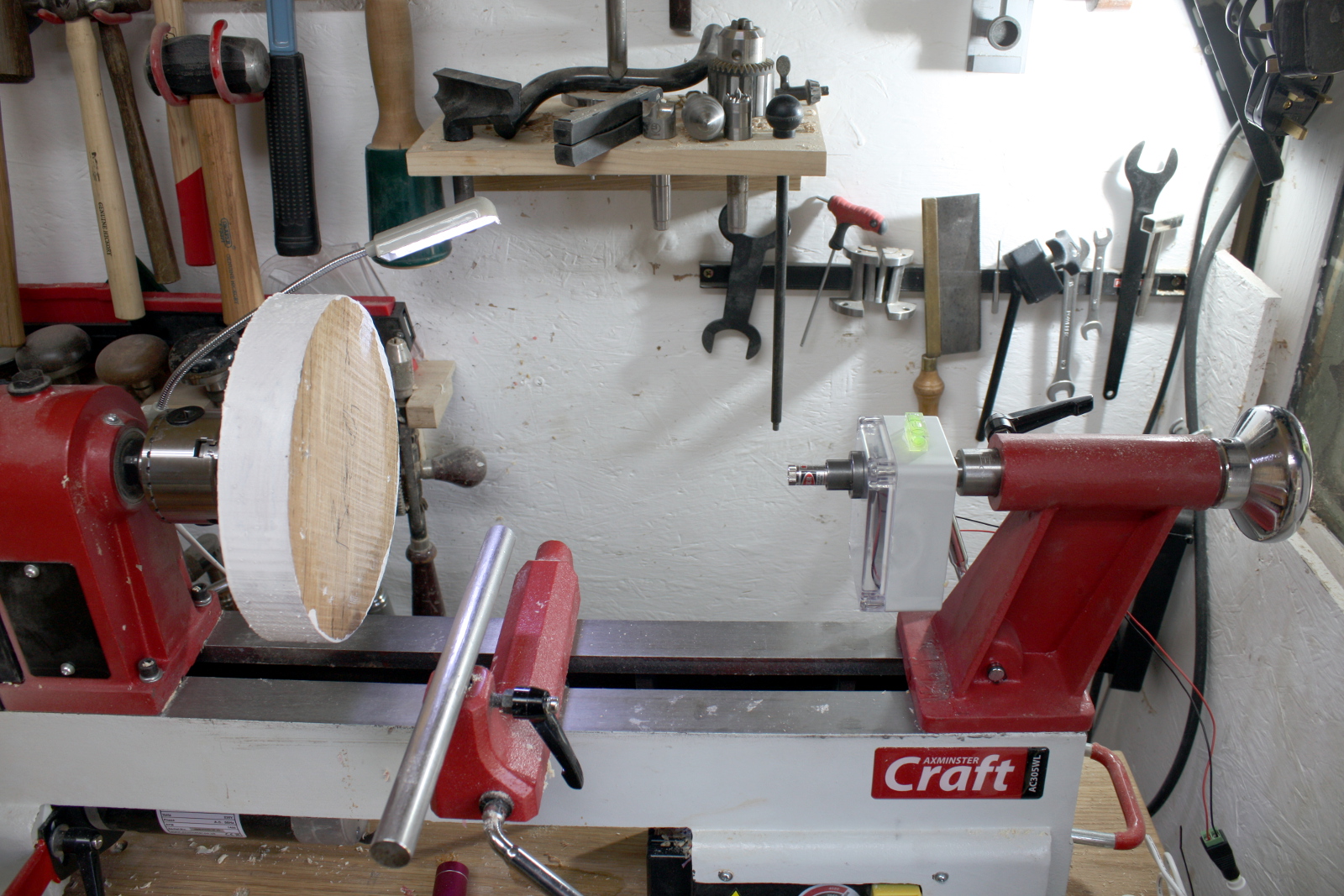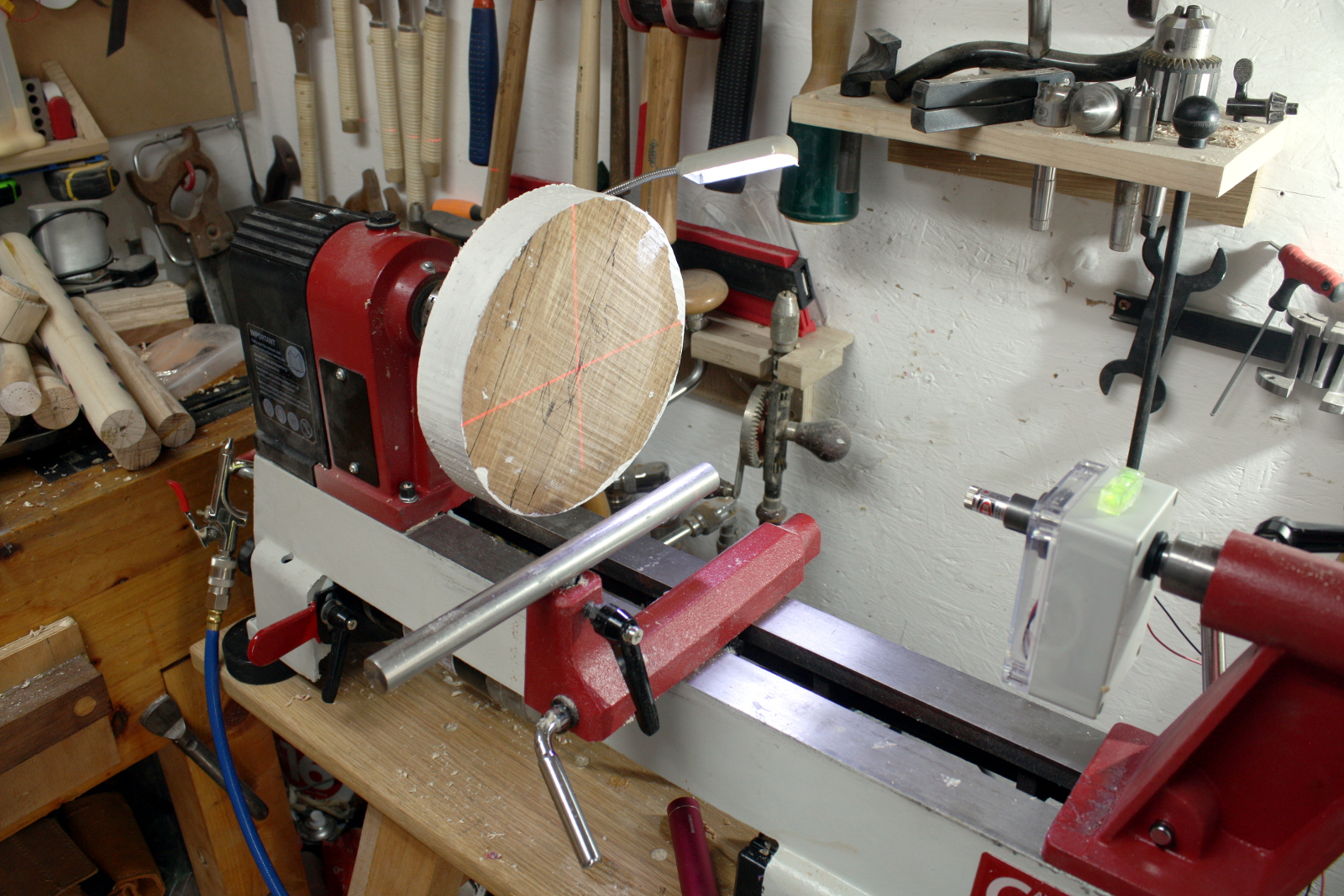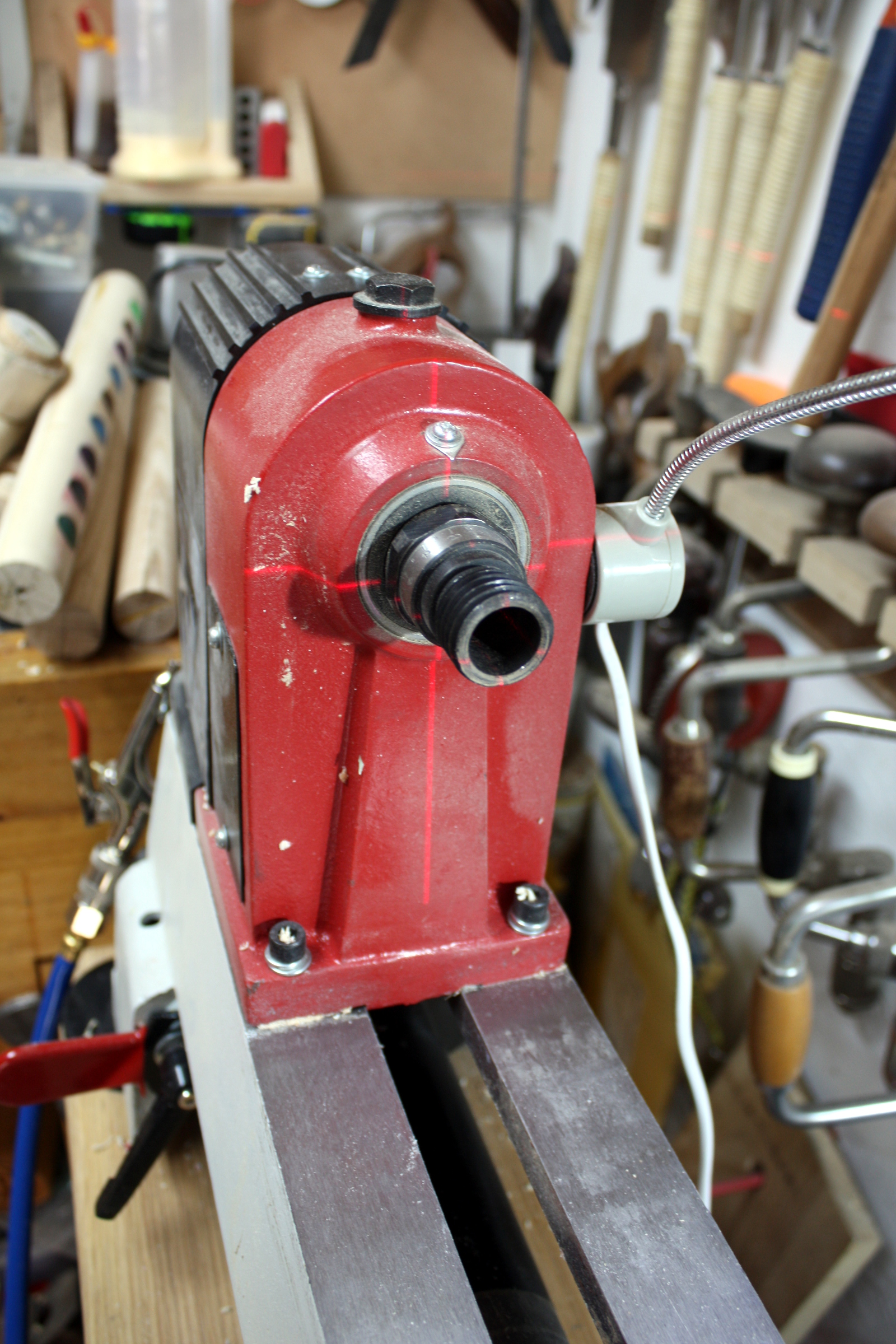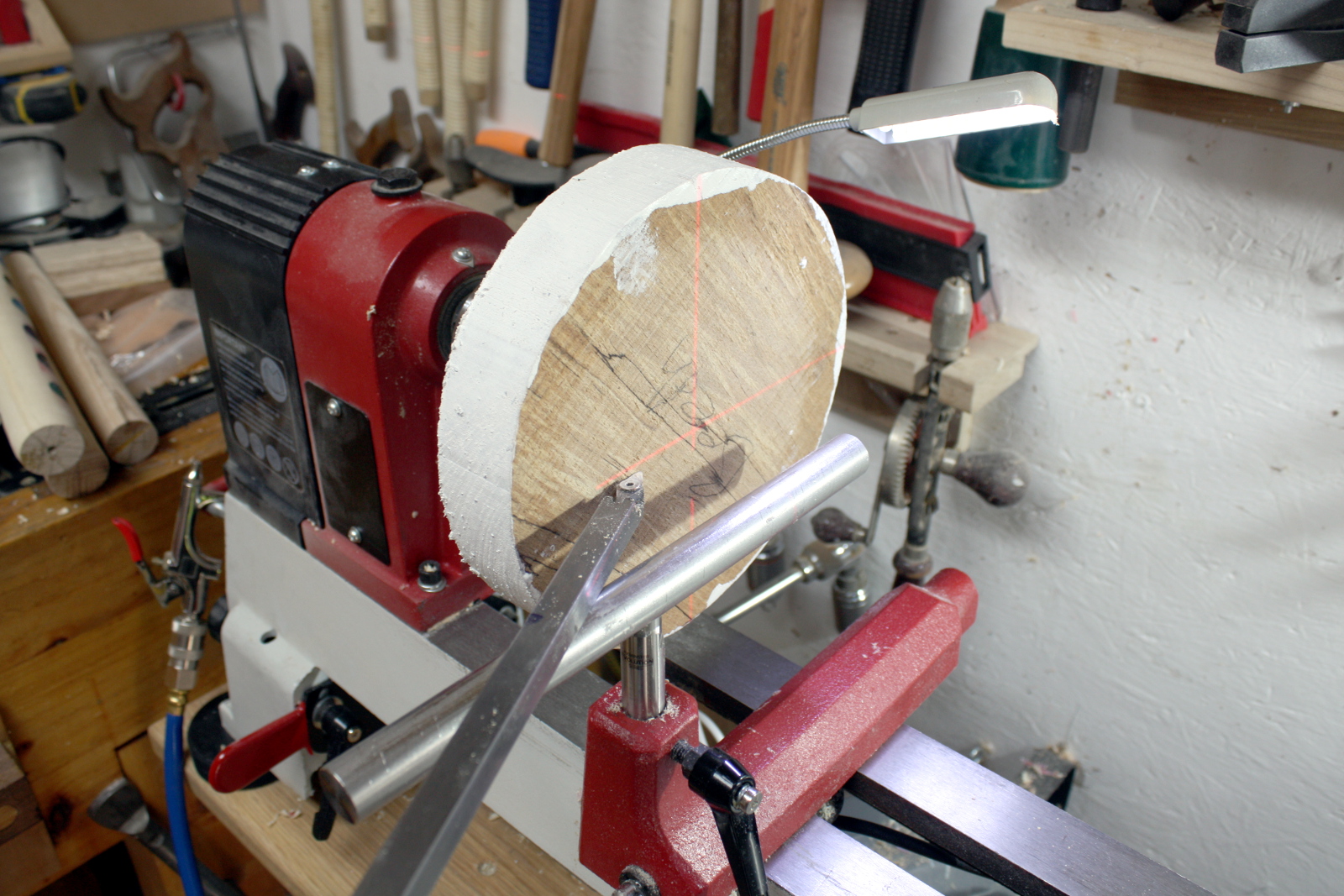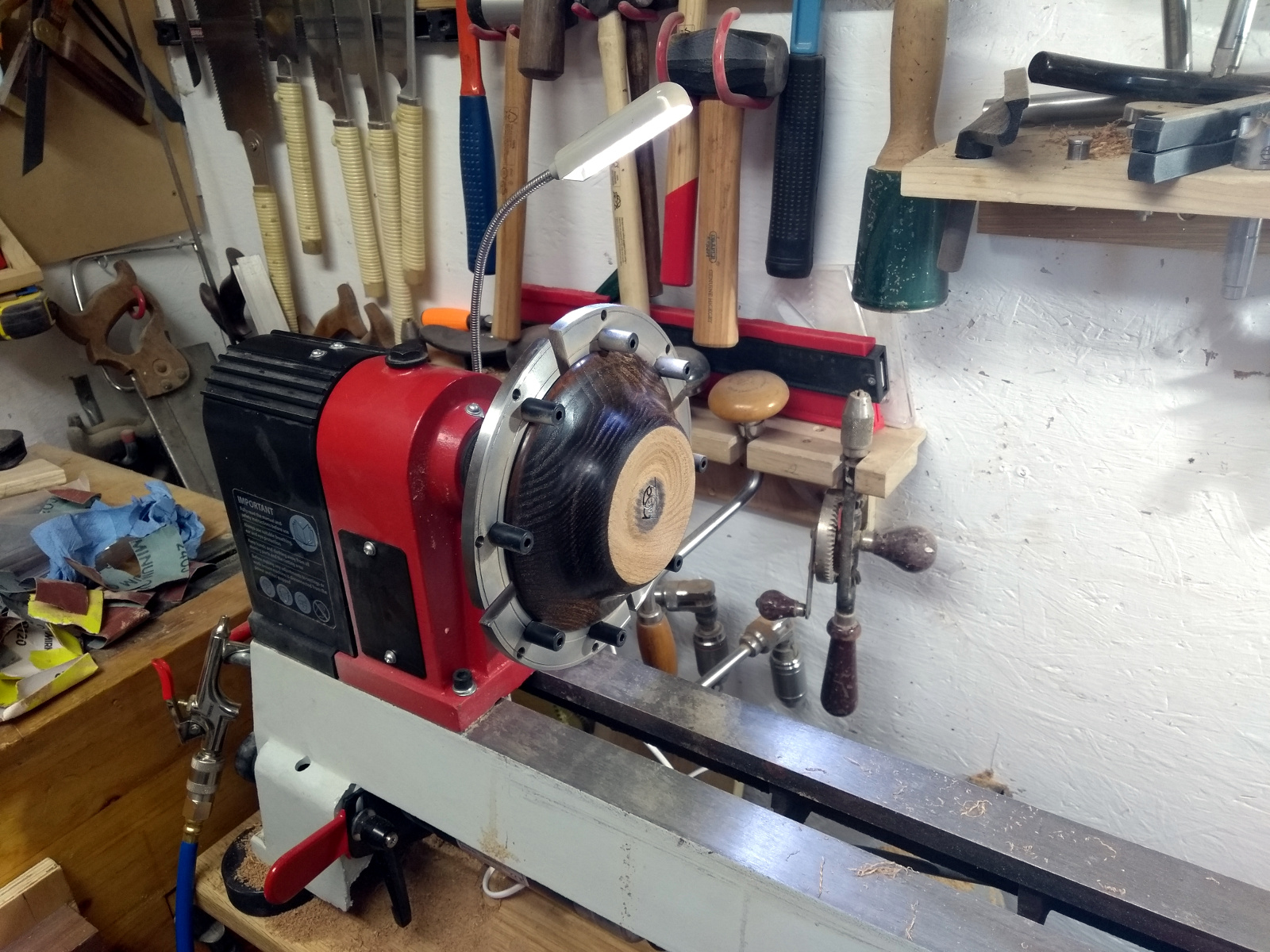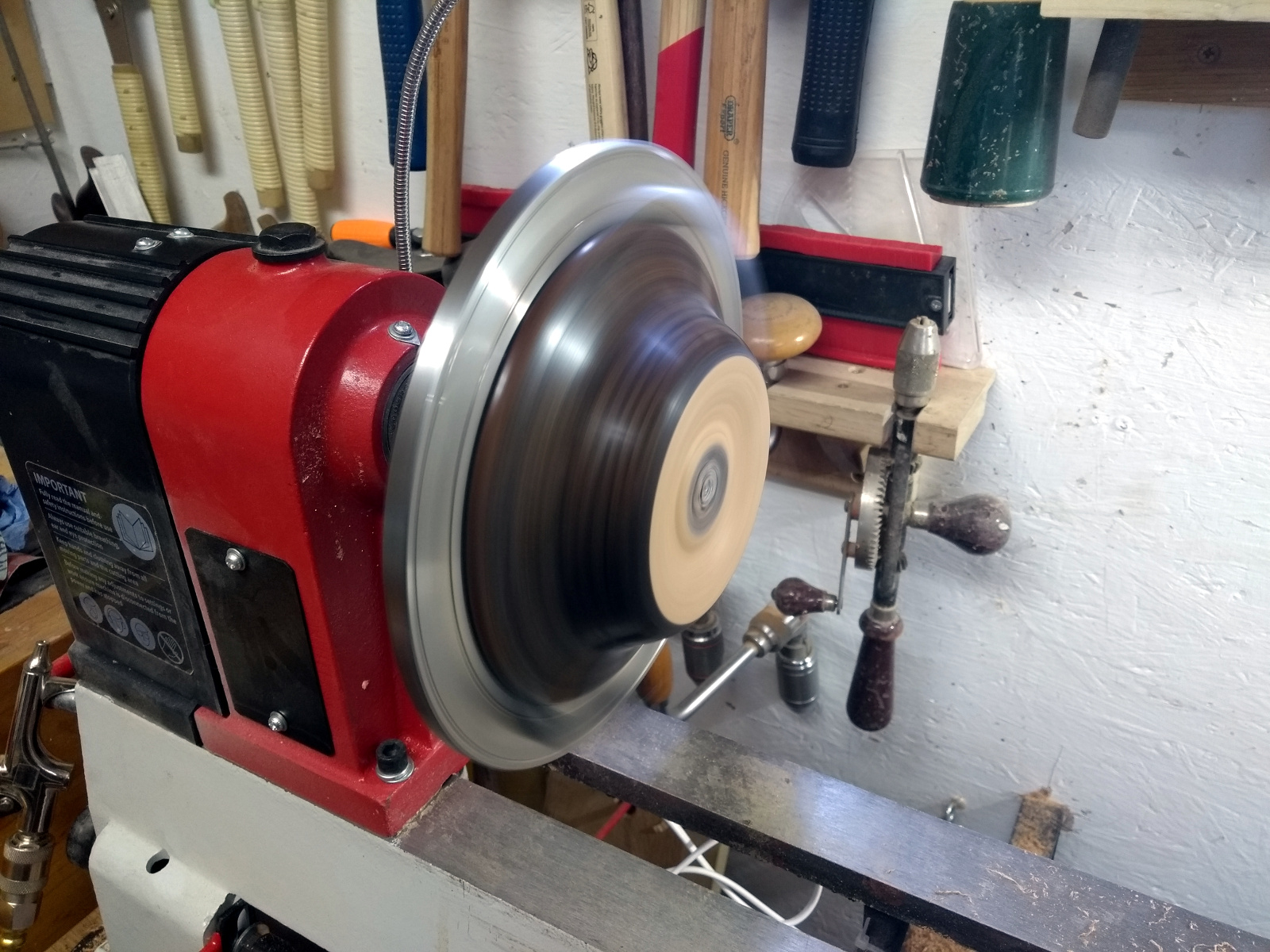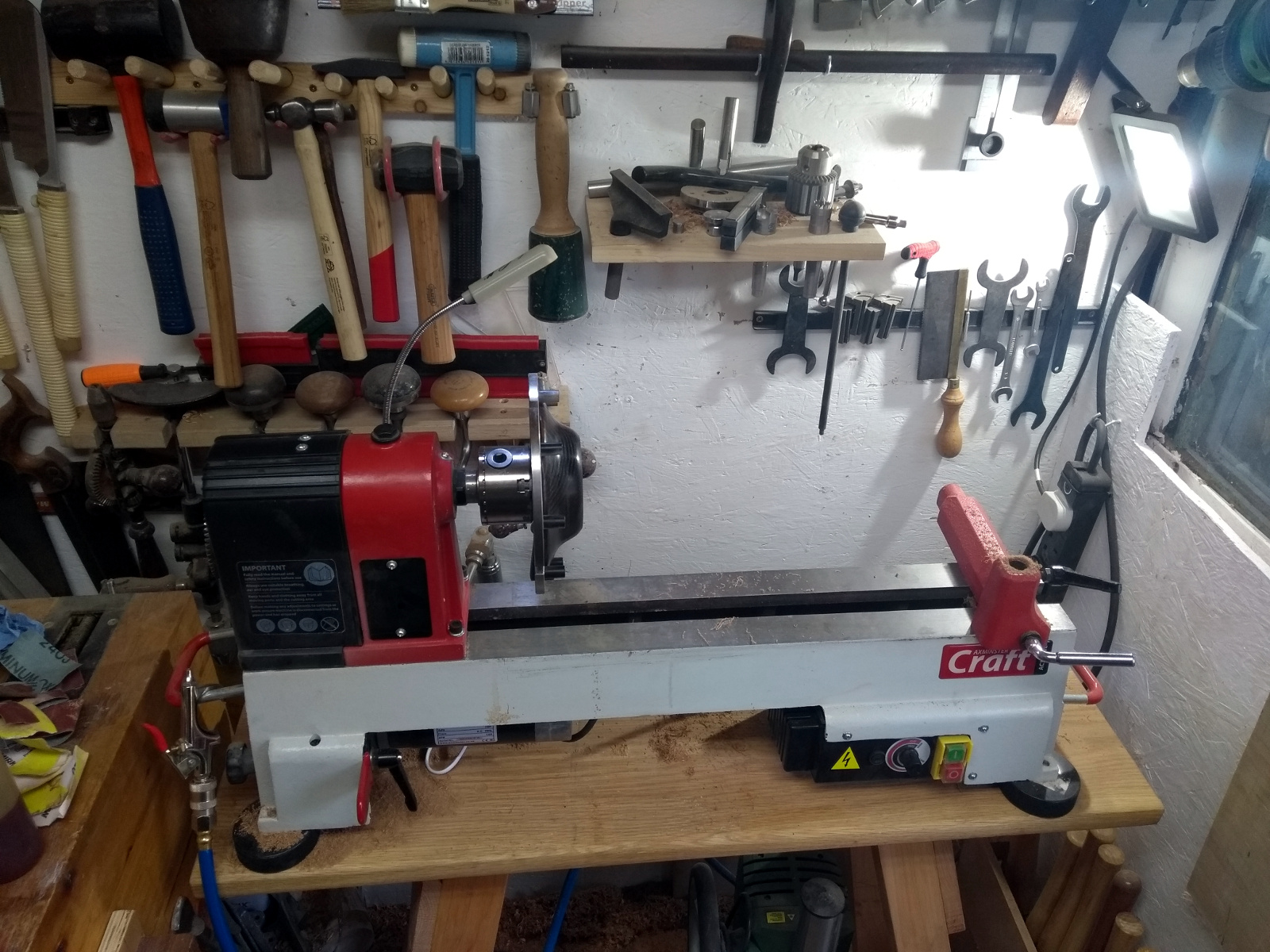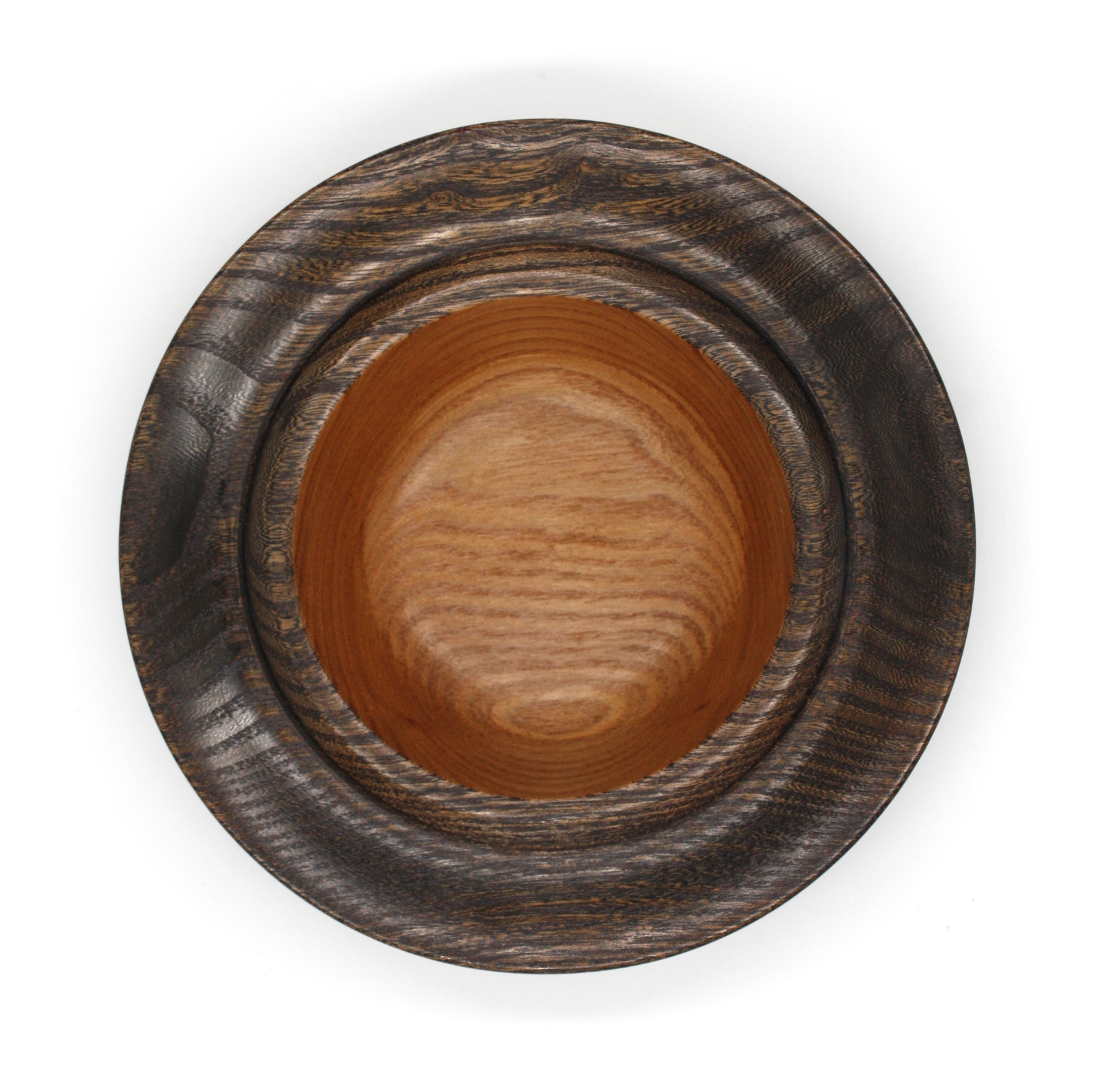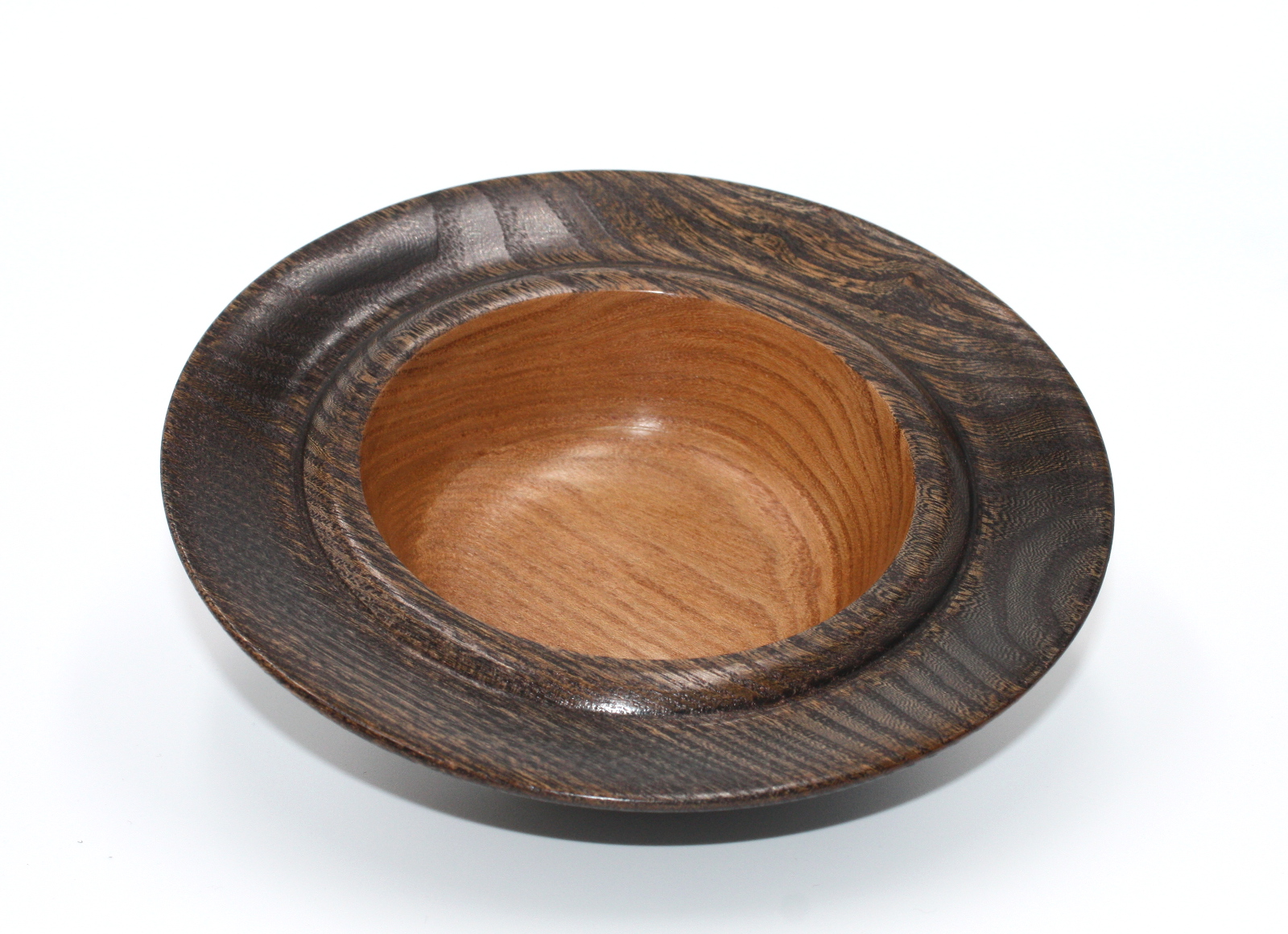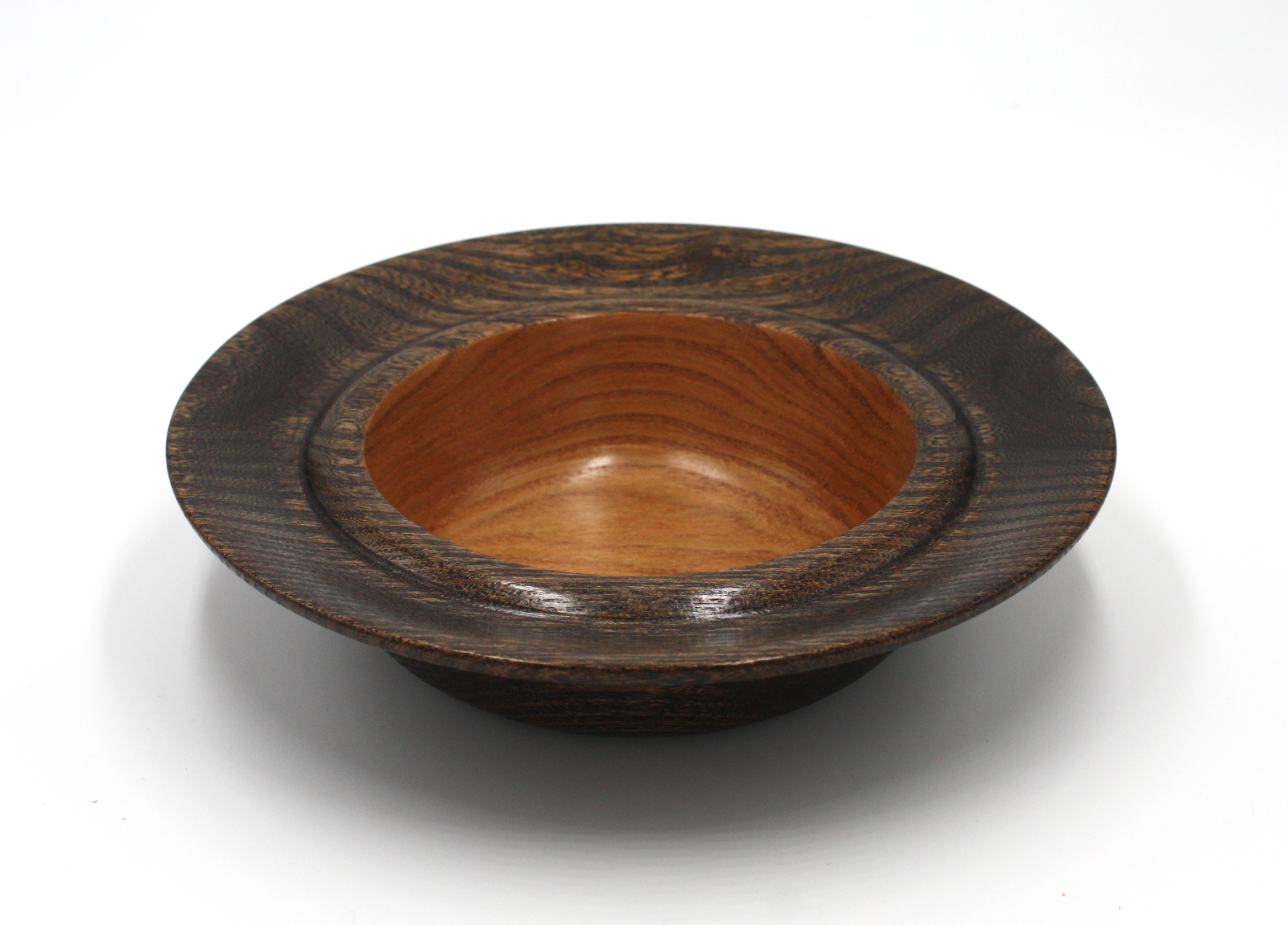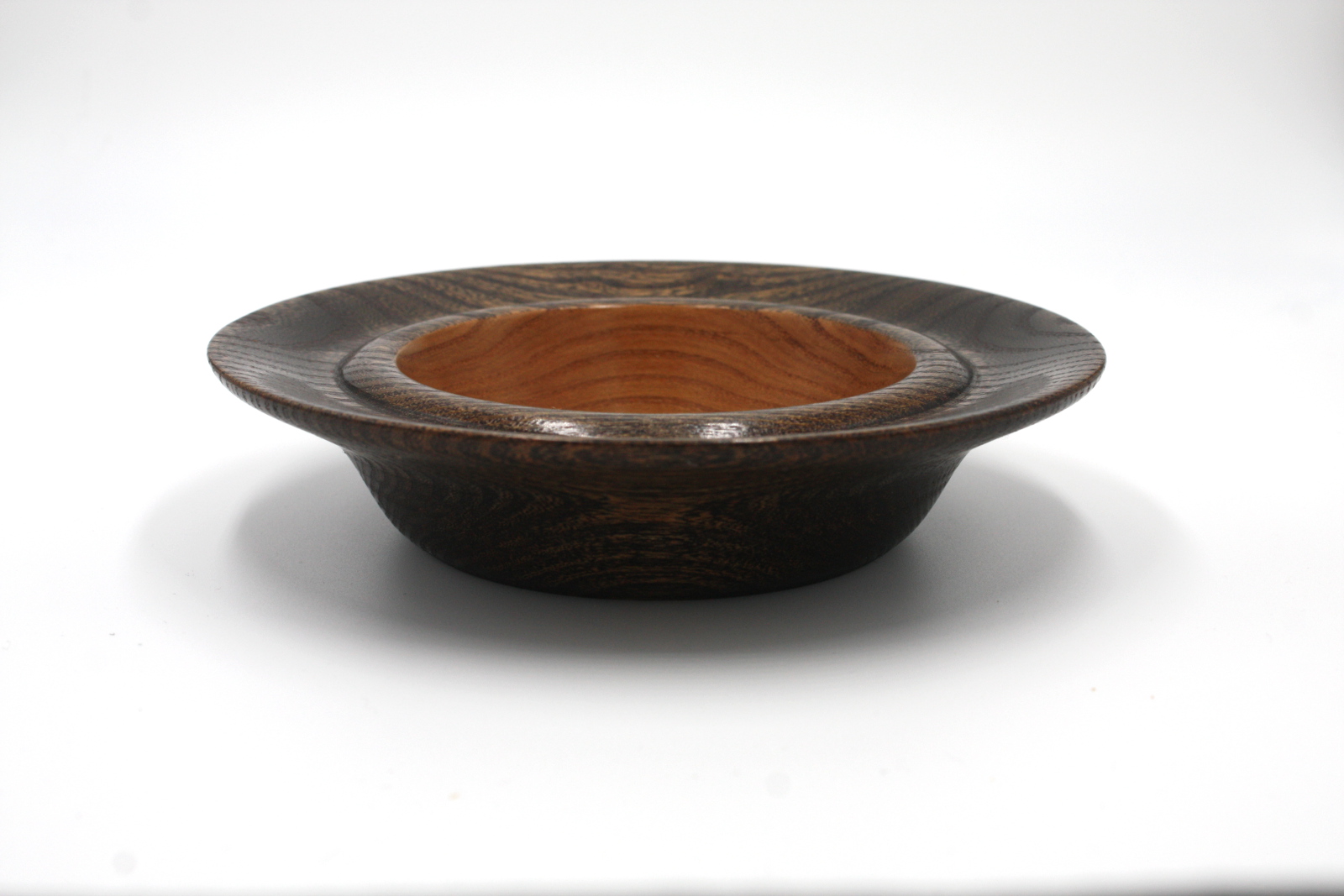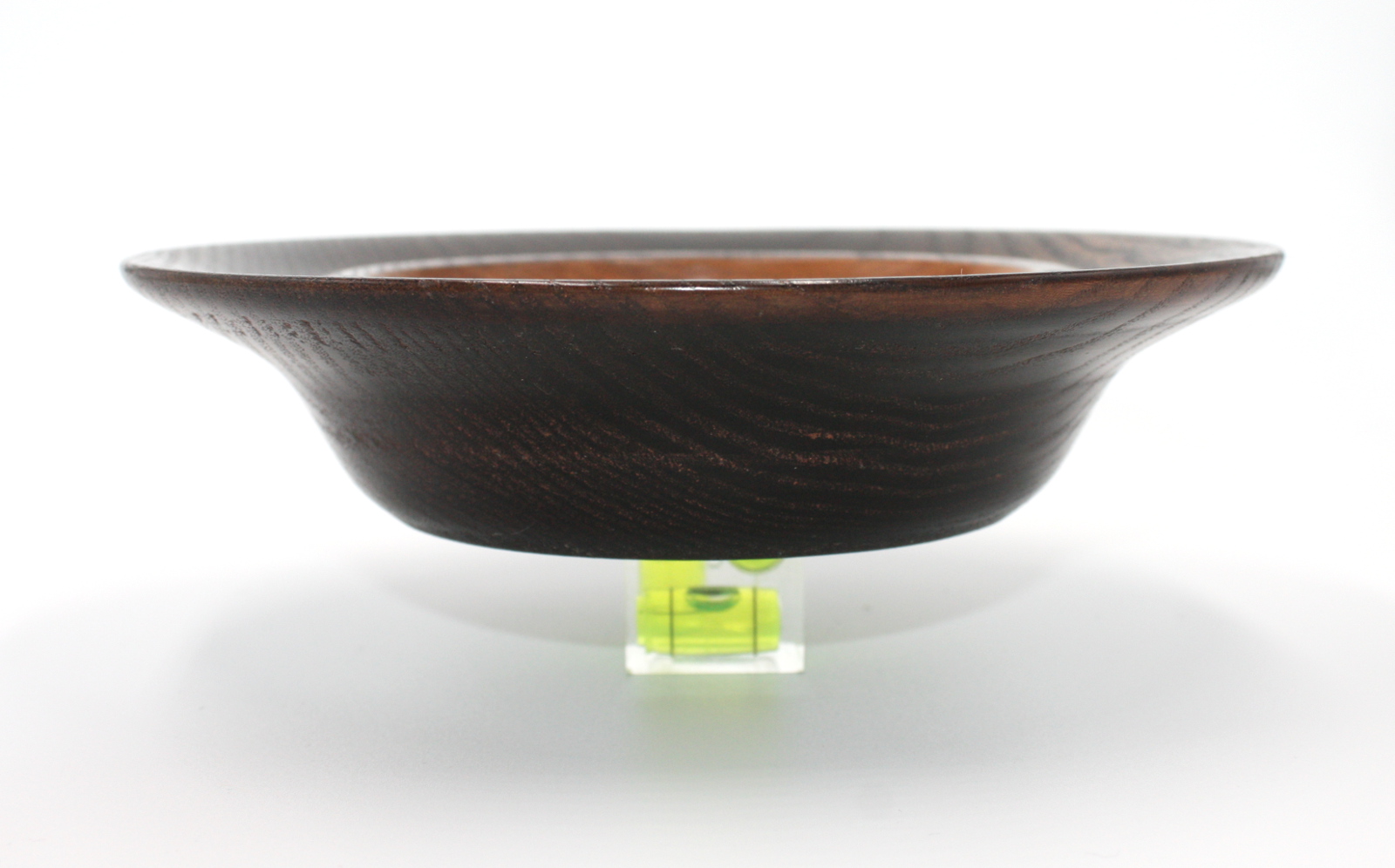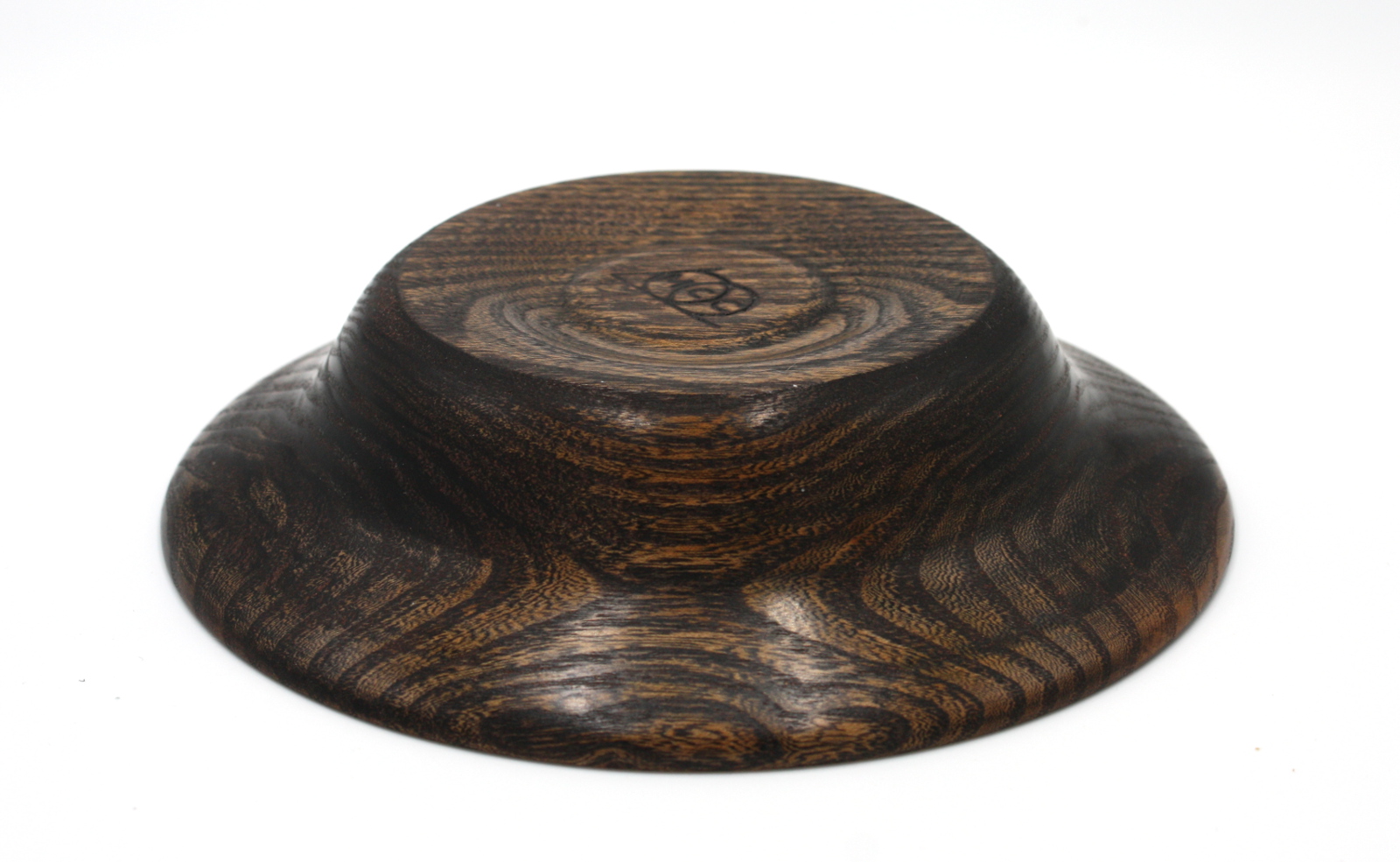I’m progressively increasing the size of the blanks I’m trying on the lathe, rather than jumping straight into a 12×3″ or 10×5″ blank which would be up near the top end of what I think you can safely do on my minilathe. This was a spalted beech blank about 8″ in diameter and 2½” thick. Small by most people’s standards I’d say, but give me time 😀
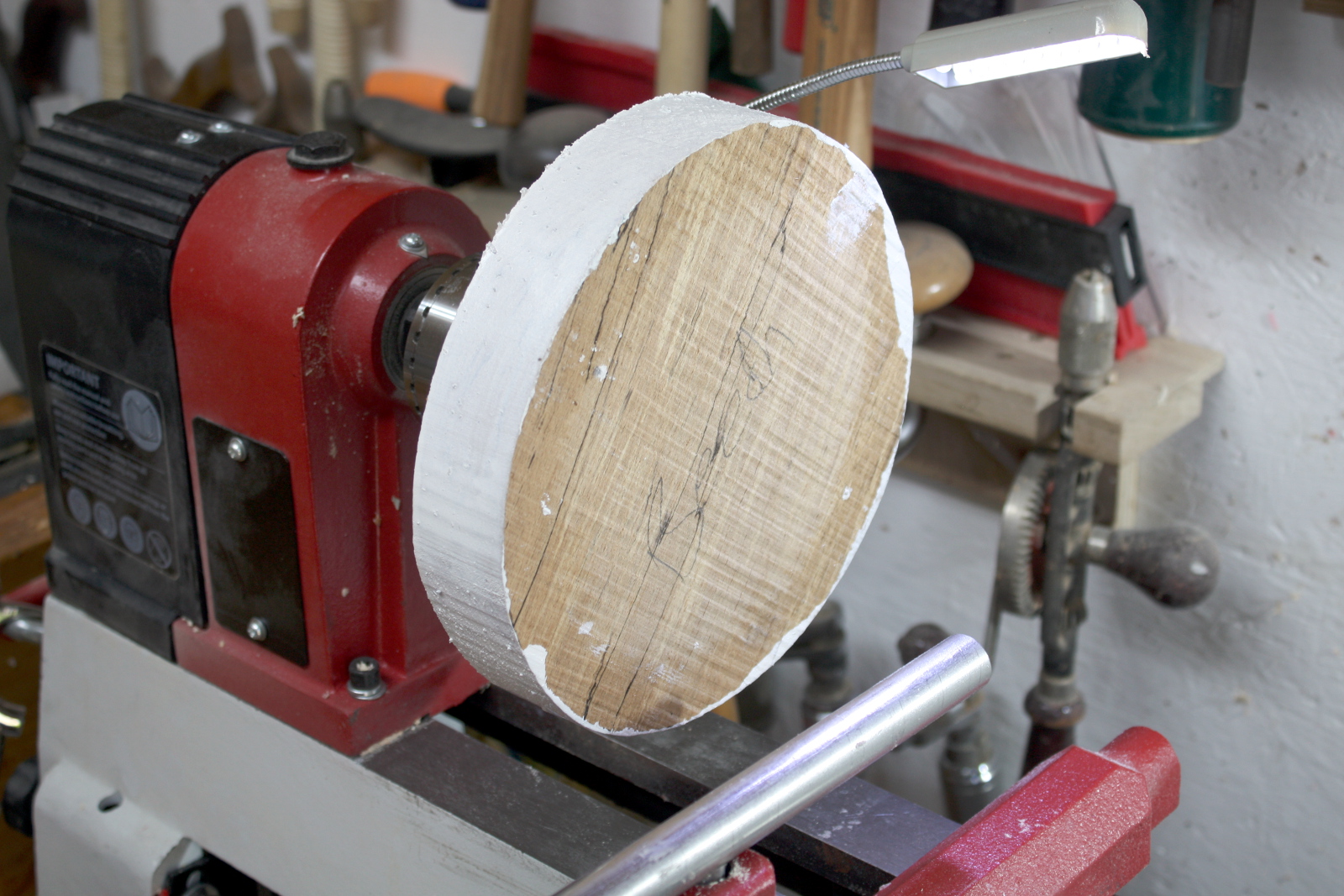
The blank did come sealed btw, using parrafin I think, but I had one miniature blank check badly on me so I kindof went on a paint-all-the-endgrain rampage 😀
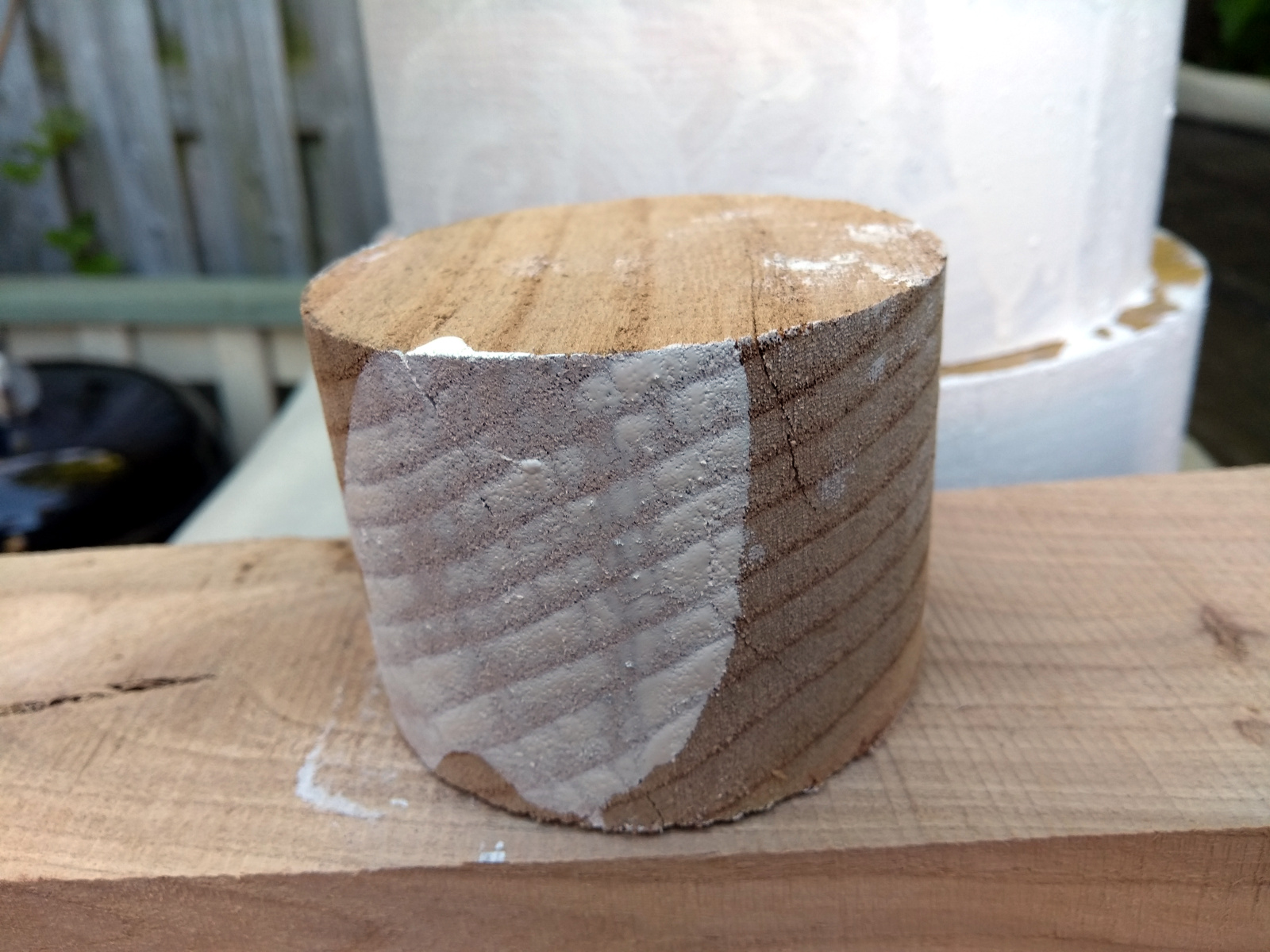
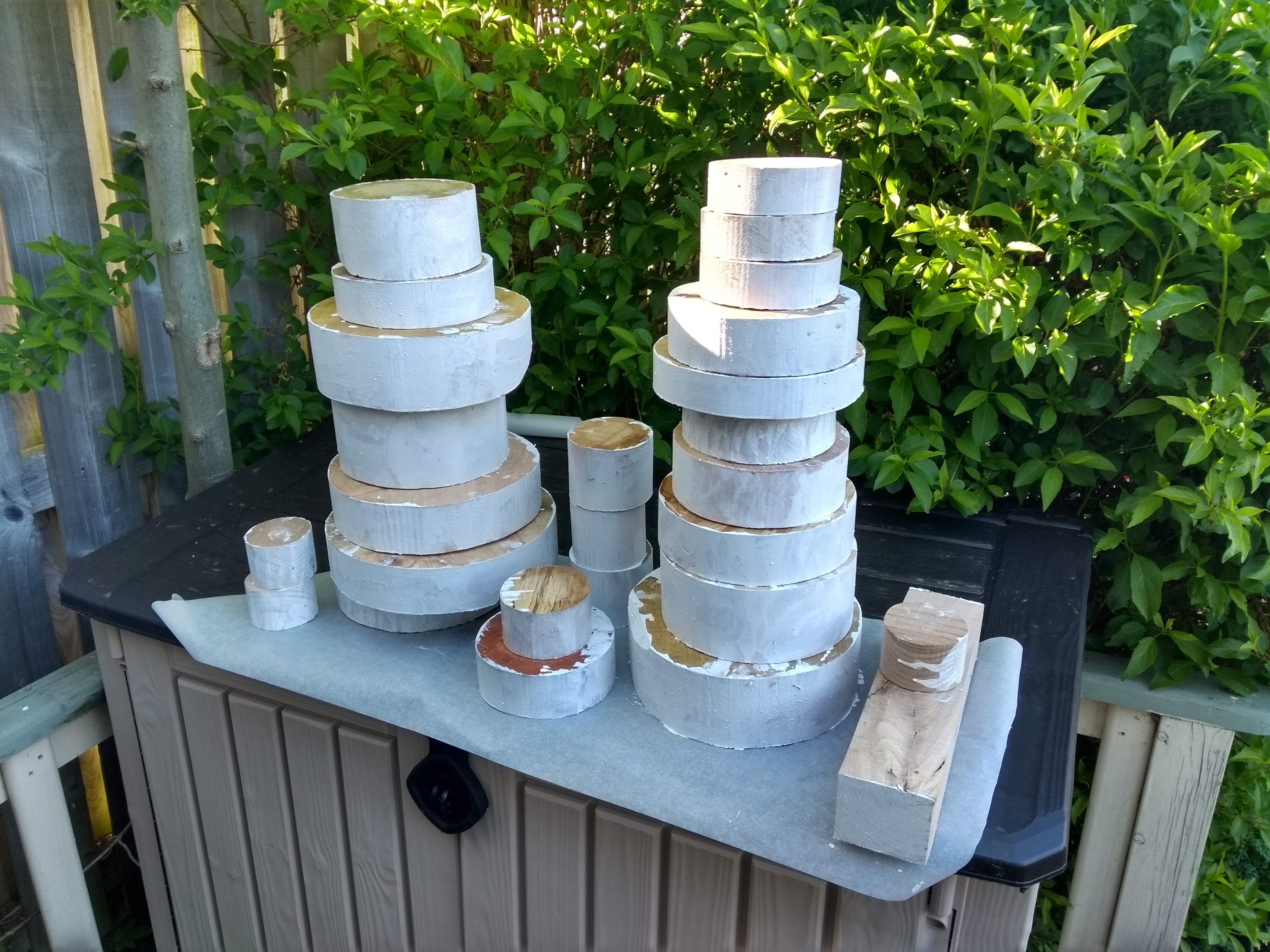
Since this was another step up in size I kept the shape nice and simple and focussed on not getting a catch and flinging the bowl off the wall and into my face.
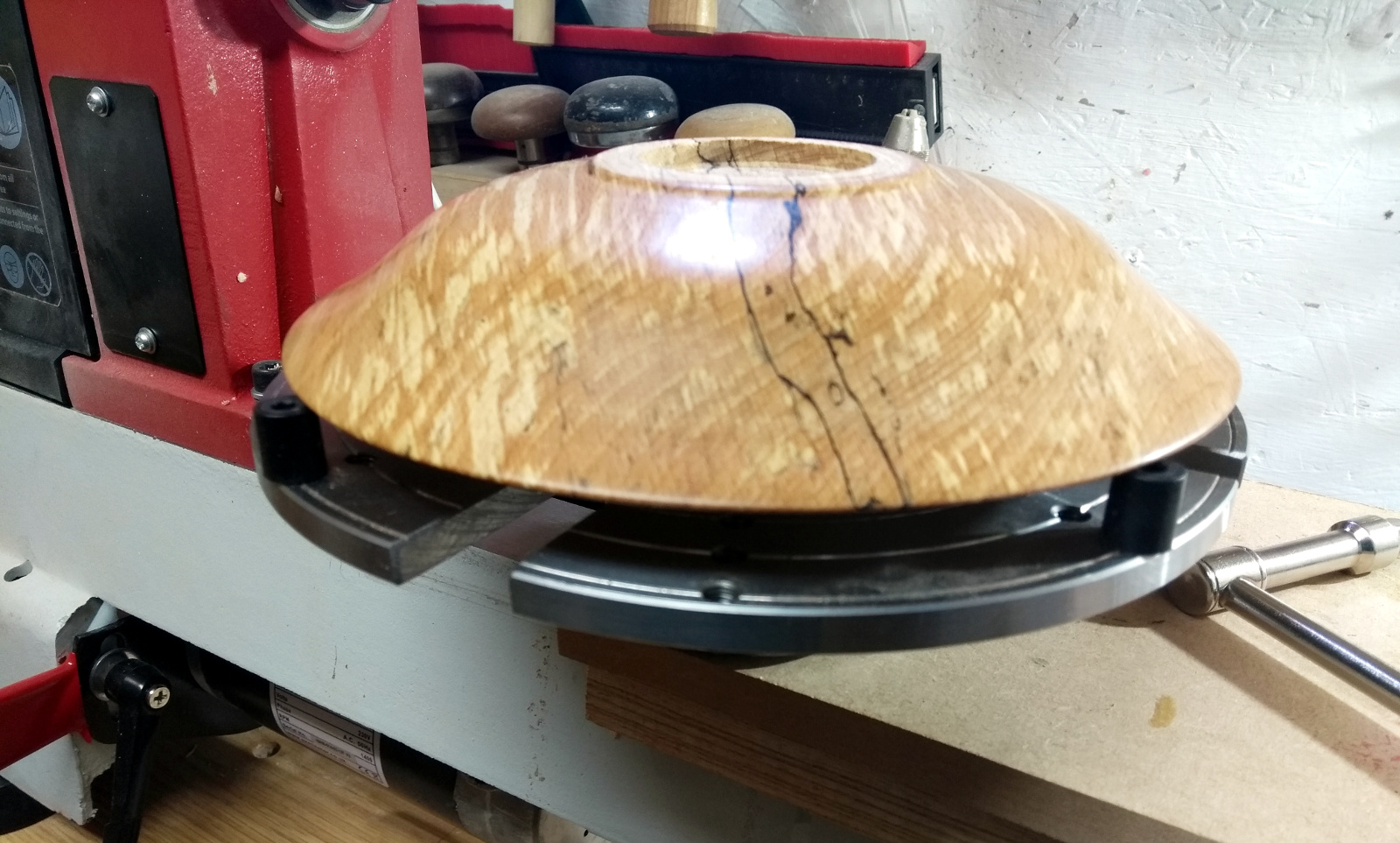
I did okay as well, up to this point. The bowl turned out to be too big by a few mm to go into the cole jaws, so I had to use a jam chuck for the first time and my choice of a tennis ball as a jam chuck was not without issues – I managed to get a catch and ruin the foot and it took ages of very shallow cutting to get back to something that was at least usable (but still not right, the damage was too much for that).
Still though. If you use spalted beech, you’re basically cheating off the bat because it never seems to turn out ugly 😀
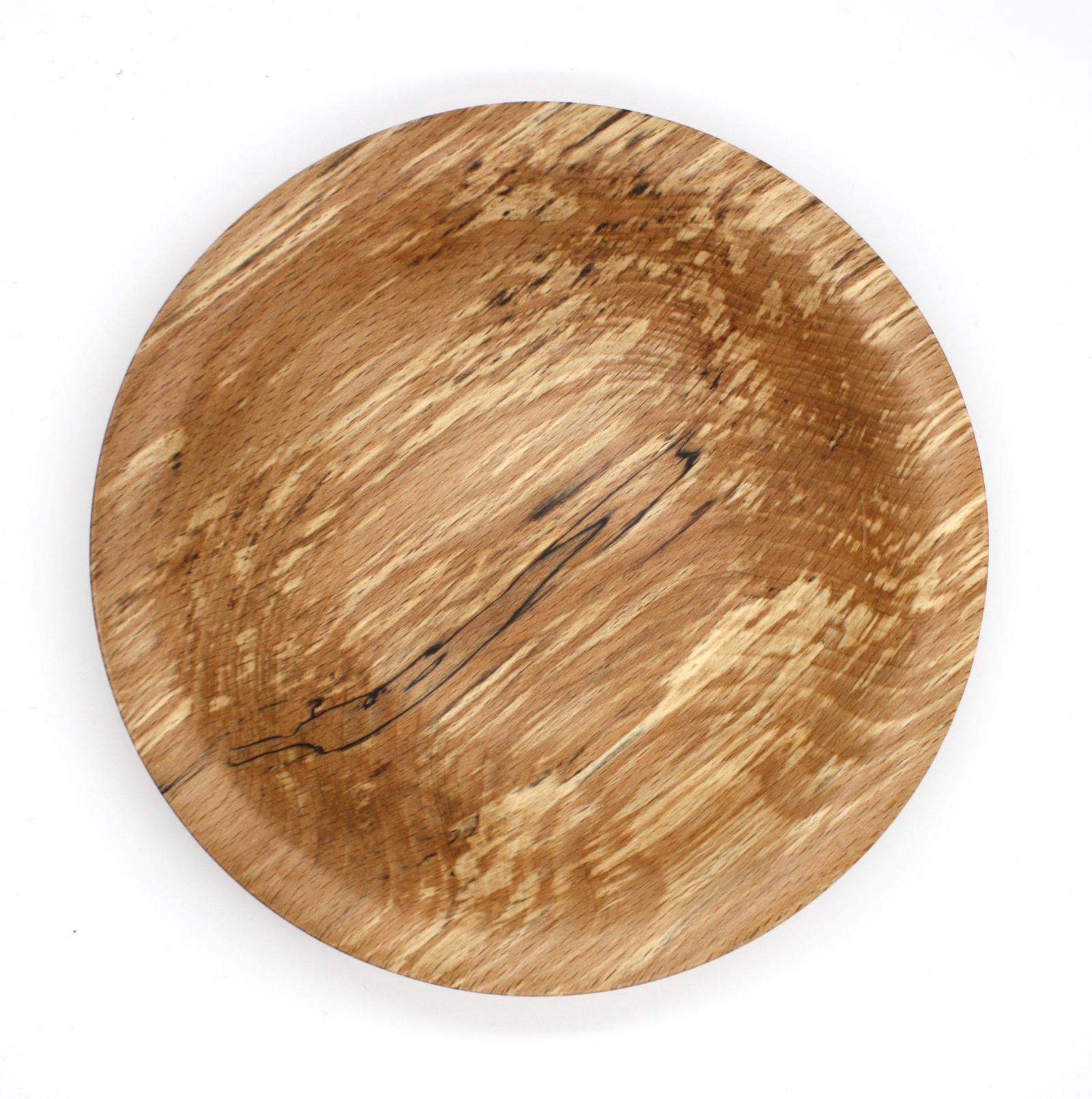
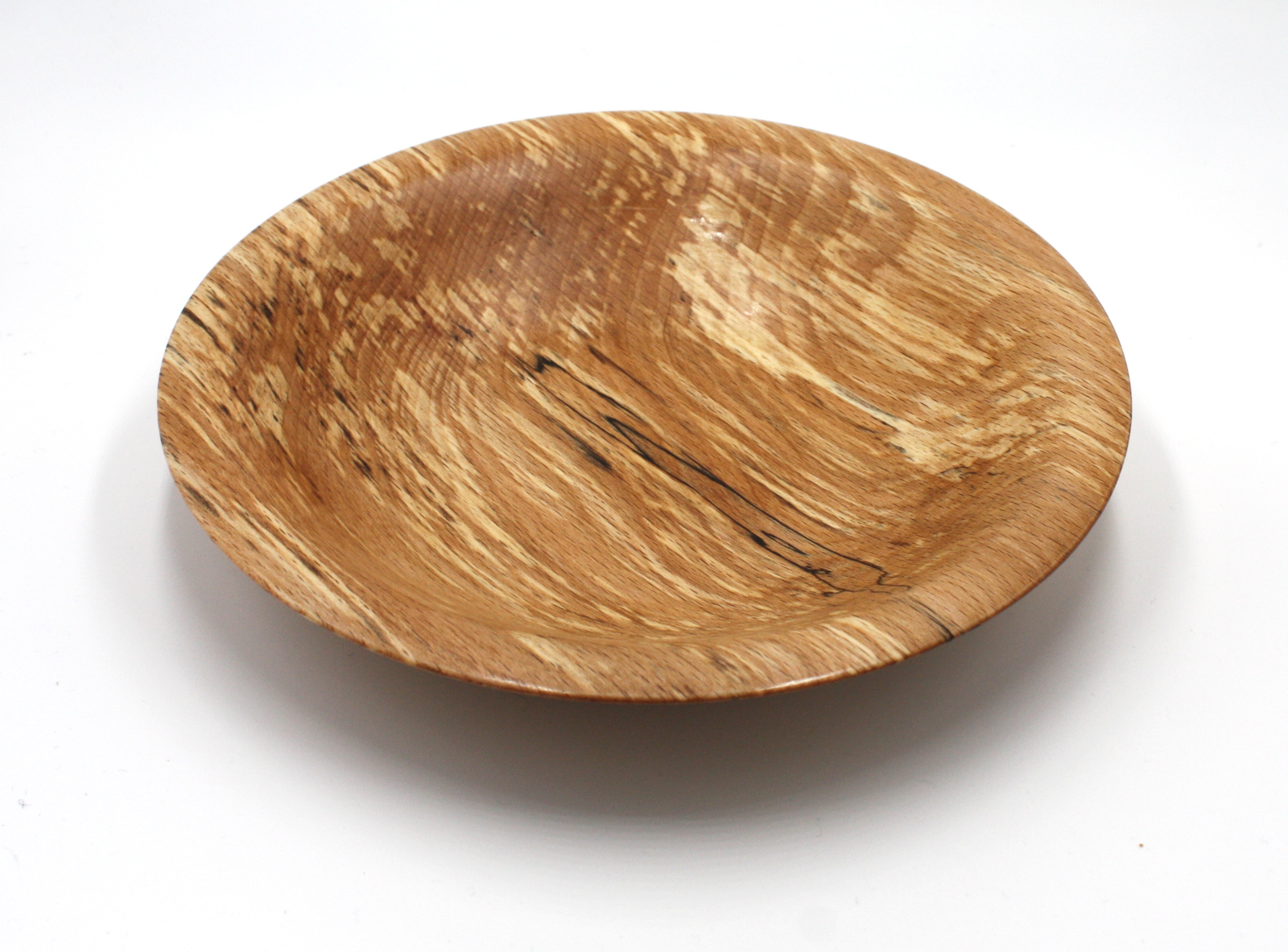
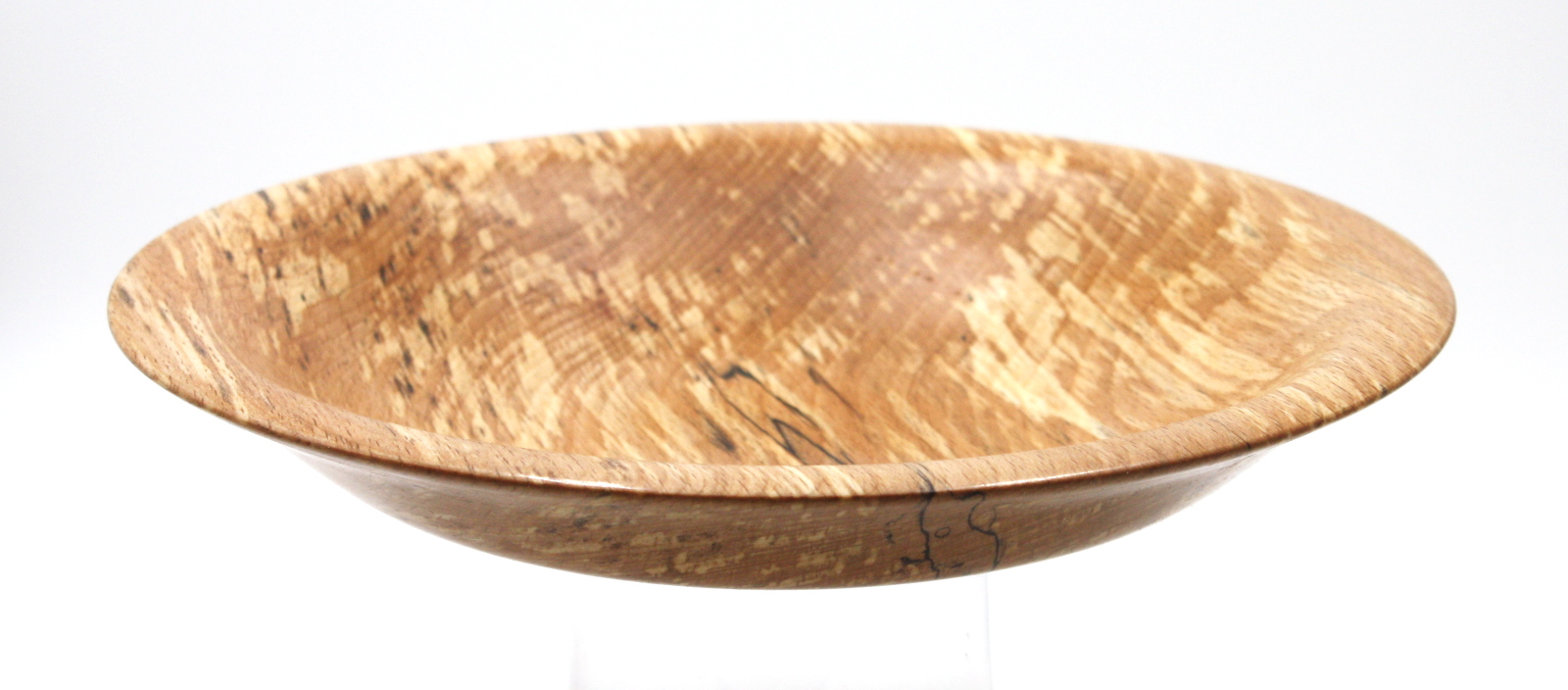


I’m happy enough with that as a very small fruit bowl 🙂
